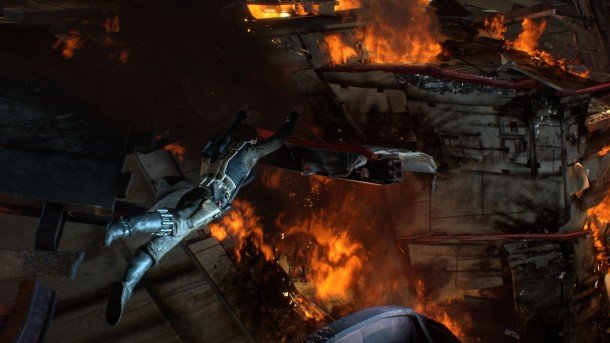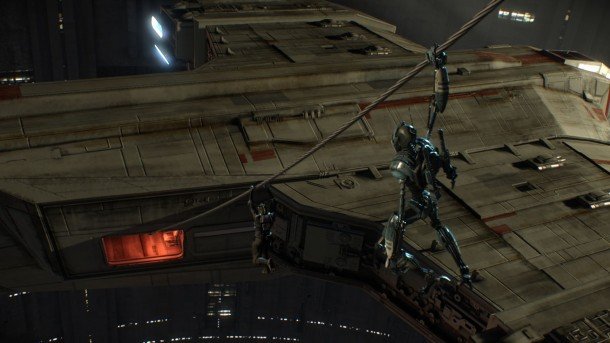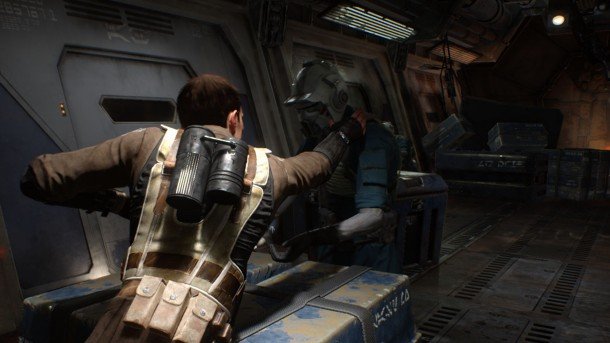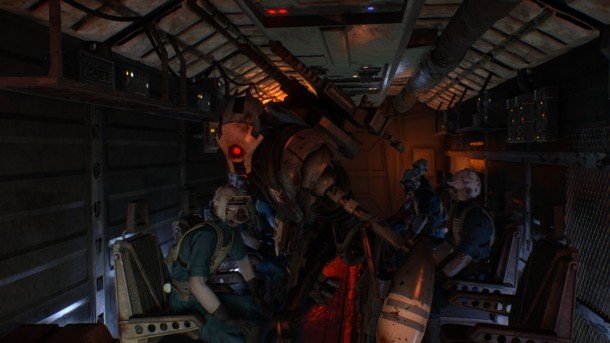
This preview originally appeared in issue 244 of PC Gamer UK. Written by Phil Iwaniuk.
When you think Star Wars, your mind doesn't wander to Episode 1's sandy race tracks or federation vessels full of bickering politicians. No, you go straight to the Mos Eisley cantina scene. It was the wrong side of town, set to a swing jazz background. It was where we saw what Han Solo was all about, and as such it was the birthplace of all our bounty hunter fantasies. It's also the chief inspiration for Star Wars 1313. Out with the Jedi, in with gun-slinging space-pirates who shoot first then realise there is no 'later'.
“It has been liberating,” says creative director Dominic Robilliard. “I love every aspect of Star Wars, but being able to investigate something that's always been in the background but that you've never really spent any time in is just awesome.” Robilliard's mum forgot to hit record during Episode IV: A New Hope until that cantina scene, so the universe literally begins there for him.
He's also keen to avoid overindulging player's force power fantasies this time, stripping his game back to a simple but focused combination of cover shooting and platforming. The eponymous Level 1313 of Coruscant, a skyless nether-world populated by deadbeats, mercenaries and gangsters, is the perfect venue to host that game, says Robilliard: “It's that kind of vibe, this criminal underworld that produced people like Han Solo and Jabba – and I think that [matches] the type of thing we're going for.”

Star Wars 1313's mechanics won't win any innovation awards, but the slickness of its execution is going to win it a lot of friends. In cutscenes, the player character and his bounty hunter boss convey a level of subtlety in their facial expressions that make other game protagonists look like homemade sock puppets.
When you're in control, your character's fluidity of movement looks startling. Enemies overact like they do in the movies, but look similarly convincing.
That animation quality is a result of the studio's collaboration with Industrial Light & Magic, a CGI and special effects house with a hoard of Academy Awards to rival James Cameron's. ILM created the special effects for all the Star Wars movies, and just about every other visually impressive movie to date. Jurassic Park? ILM. Terminator 2? Yup. The Abyss. Tick.
Keep up to date with the most important stories and the best deals, as picked by the PC Gamer team.
And now it's working on Star Wars 1313, lending its expertise on everything from facial animation to light sources, engine trails to holographic elevator controls.

To create that elevator visual, ILM found the guys who created the original hologram effects in Episodes IV-VI, who work at LucasFilm Animation in the same building as ILM and LucasArts. They discovered that the effects were achieved by looping VHS footage over and over, and found a way to recreate it.
That expertise elevates this game beyond LA Noire's facial focus and into more impressive territory. Regardless of the game's eventual quality, ILM's involvement is important, and could be the beginning of some considerable line-blurring between the film and games industries.
But there's not that much of it yet – only the short scenes I'm being shown. To prove what we're looking at is in-engine, real-time rendering, the devs indulge in a bit of Blade Runner-style zoom and rotate while they're showing it off to us in their San Francisco HQ. As the player character and his boss bundle a Trandoshan onto the elevator and descend to 1313, the devs stop and zoom in to examine every one of the pores on their faces. It isn't flattering, but it's a powerful demonstration of the detail in each inch of game.

As art director Dave Smith explains, that extreme fidelity brings a unique challenge: “We have to build the things digitally as if we'd actually built them for real.” He points to a battered storage crate: “This is a metal crate with a layer of undercoat on it, then another layer of paint, then a treatment finish.” A crate.
With all possible resources being spent on visual fidelity, it's perhaps understandable that what little there is to see is mechanically conservative. Those fancy crates are for ducking behind, shooting around, and the demo ends with some Uncharted-style leaping between exploding platforms. It's the kind of demo that makes you wonder what Clint Hocking, the designer of Far Cry 2 and lover of open, emergent worlds, was working on before he left LucasArts to join Valve earlier this year.
Star Wars 1313 wants to set a new benchmark for in-game animation when it arrives at the tail end of 2013. It might do that, but the cost might come at the expense of player freedom.
And at expense to your wallet. The build we saw kept a steady 30fps... running on a rig with three Nvidia GTX 680s inside. There's years of optimisation to come, but expect this to be the first of a new wave of games to finally challenge your PC.
PC Gamer is the global authority on PC games—starting in 1993 with the magazine, and then in 2010 with this website you're currently reading. We have writers across the US, Canada, UK and Australia, who you can read about here.


